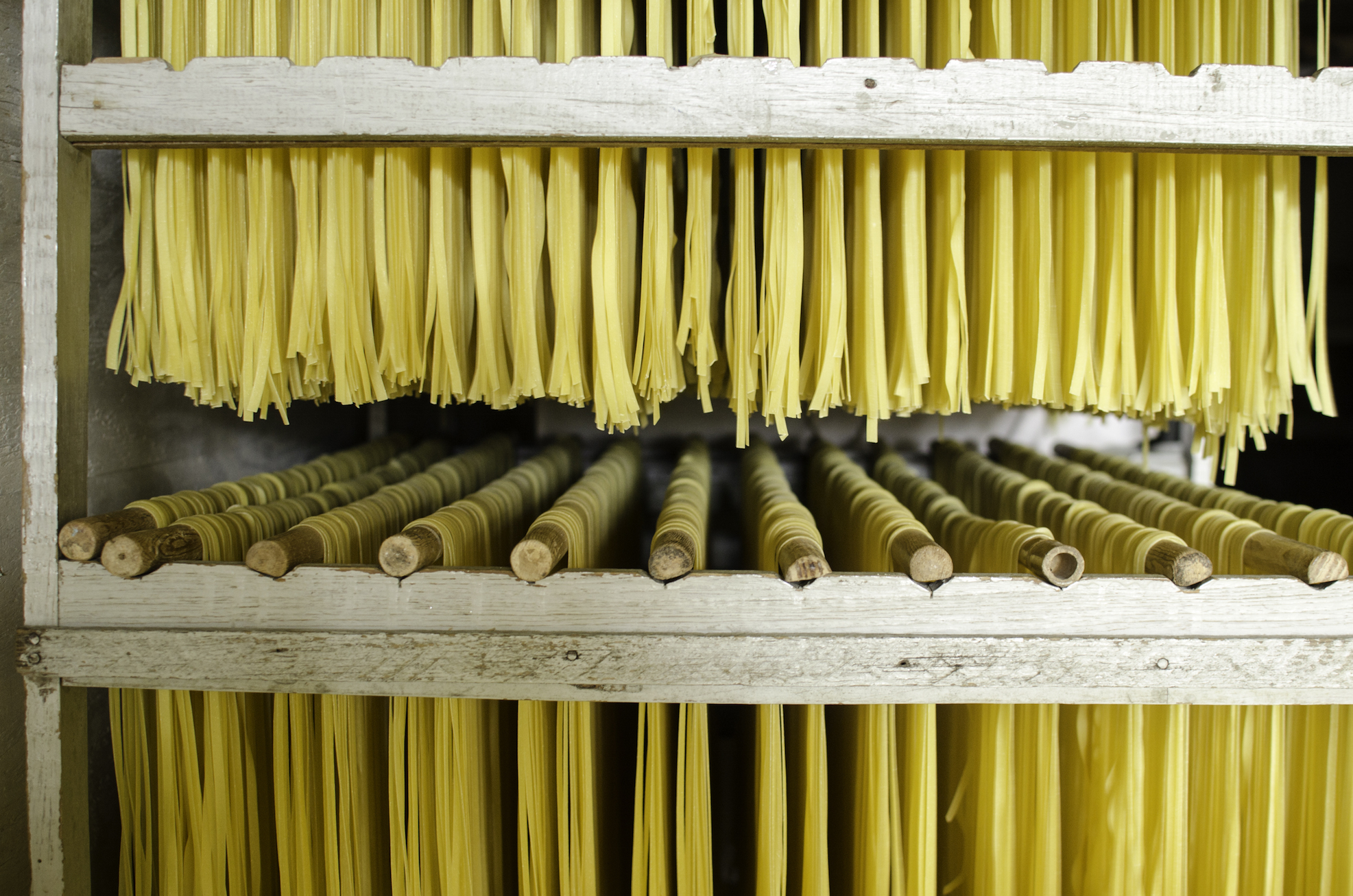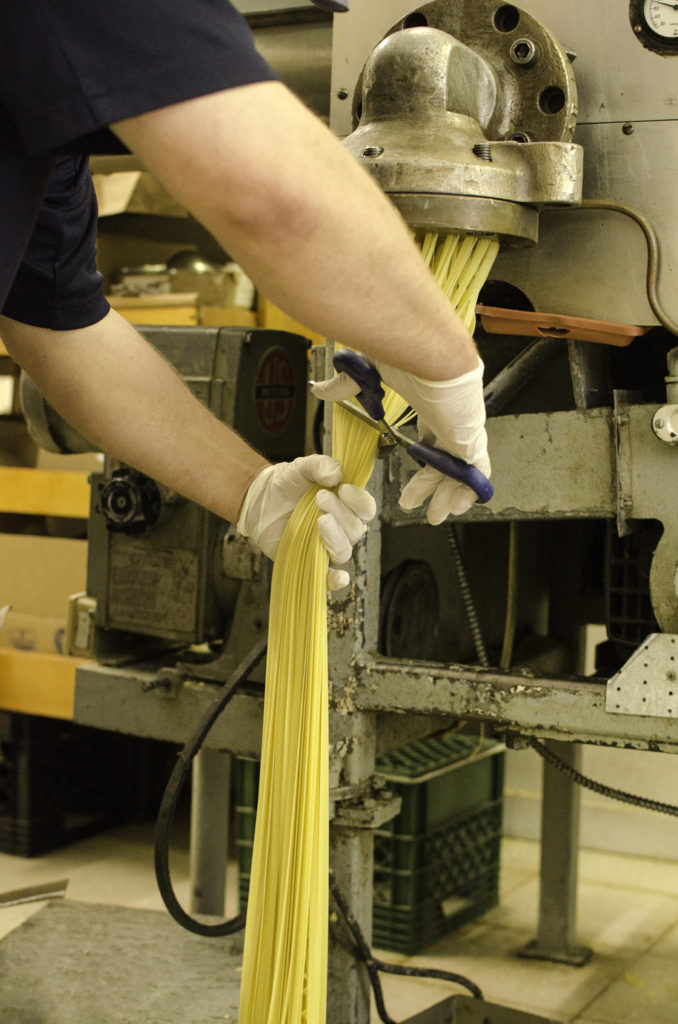
Touring the pasta-making kitchen of D’Agostino Pasta Company
On certain days, if you get your timing just right, the kitchen door at D’Agostino Pasta Company will open up for you.
Behind the small counter flanked with dozens of bottles of balsamics and olive oils, there’s a massive, unseen operation turning out the freshest pasta Baton Rouge has to offer. Today they’re making a typical batch of spaghettini—about 1,000 pounds.
The pasta starts with 50-pound bags of flour, Semolina No. 1, fed into a giant industrial pasta machine fitted with conveyor belts and a continuously churning mixer that incorporates the fresh ingredients into the from-scratch pasta. It’s strained out through an extruder, which shapes the pasta, and a watchful pasta supervisor slices off each bundle by hand. From there, the pasta is hung on bamboo sticks to dry in the climate-controlled drying rooms.
|
|
About once a week, if you follow updates from the D’Agostino Facebook page, you can find out when to come into the Drusilla Lane shop for a behind-the-scenes look at the hundreds of rows of pasta that air-dry over the course of three days.
“The bigger pasta companies are using microwaves to dry them, and they do in 30 minutes what we spend three days on,” chef Daniel Thompson says. “Our pasta tastes like a fresh pasta, cooks like a fresh pasta. The microwave takes those good flavors of the flour out.”

Thompson, the man heading the production, calls the D’Agostino pasta-making technique “a lost art.” A graduate of New York’s Culinary Institute of America, with stints at iconic Louisiana spots such as Commander’s Palace and Nottoway Plantation, he first worked with pasta as a regular at D’Agostino’s original Plank Road location.
After buying the business and many of its recipes from the original owners three years ago, he took pains to keep the best parts of the operation intact, even having the pasta-drying chambers physically moved into the new location.
Thompson and his family have put their own touch on the nearly 90-year-old business. In the back, he makes friendly conversation with two women who measure out each package of pasta and seal it by hand. Both women rave about the signature red sauce, which is Thompson’s own invention: something new to the brand that’s still reminiscent of the classic D’Agostino flavor.
“I made a test batch and gave it to the old owner, Frank [D’Agostino], and he brought it home for his mom to try it. And she said, ‘This is what our sauce used to be,’” Thompson says.
Aiming to establish itself as a pasta manufacturer, D’Agostino’s now stocks its products in more than a dozen grocery stores across town and provides pasta to several local eateries, including The Little Village, DiGiulio Brothers, Juban’s and Table Kitchen & Bar.
Even as product output grows, though, the recipes will stay the same—simple, authentic and made from scratch. Head into the kitchen, and you can see for yourself. dagostinopasta.com

|
|
|
